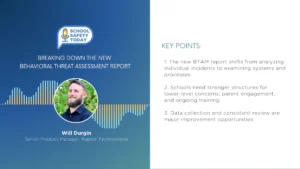Schools Must Dig Deep with Root Cause Analysis to Truly Tackle Absenteeism
As the U.S. grapples with a rising tide of chronic absenteeism in schools, a phenomenon exacerbated by the COVID-19 pandemic, educational leaders are faced with a pivotal challenge. With the shift to online learning during the pandemic, students and parents questioned the efficacy and necessity of traditional schooling structures, leading to increased absentee rates even as schools have reopened. This issue brings to light the critical need for a reassessment of how educational environments engage with and retain students.
How can schools utilize educational technology to effectively address and reduce chronic absenteeism?
Kevin Dougherty, a renowned edtech strategist and former educator and administrator, offers a comprehensive analysis of the importance of not only integrating technology with student-centric educational models to enhance engagement and ensure consistent attendance but also employing root cause analysis and fostering community and leadership collaboration.
Main Takeaways:
- Redefine the Role of Teachers: Transition from traditional teaching to facilitating learning, where teachers act as “engineers” of student learning, tailoring education to individual needs and future career paths.
- Root Cause Analysis: Before implementing solutions, schools need to clearly define the issues of absenteeism through thorough analysis, identifying specific local factors contributing to disengagement.
- Engagement Through Relevance: Schools should ensure the learning provided is directly linked to real-life applications and future career readiness, which may include college, vocational training, or other paths.
- Strategic Use of Educational Technology: Implement technology that supports personalized learning and engagement, not just as a tool for delivering content but as a means to build connections and trust with students.
- Community and Leadership Collaboration: School leaders must collaborate to craft strategies that address the underlying causes of absenteeism, setting clear goals and actionable plans that involve the whole educational community.
Article written by Sonia Gossai









